Root cause analysis tools help you identify the underlying reasons behind recurring problems. These tools aim to eliminate inefficiencies and improve processes, ensuring smoother operations. For example, operational inefficiencies often cause financial losses and disruptions. By using root cause analysis, you can uncover hidden inefficiencies and prevent future issues. Industries like manufacturing, healthcare, and IT rely on these tools to enhance decision-making and maintain high standards. The integration of AI-driven analytics further strengthens their ability to diagnose problems accurately and take proactive actions.

Key Takeaways on Root Cause Analysis Tools
- Root cause analysis tools identify core issues, saving costs and preventing recurring problems.
- Tools like 5 Whys and Fishbone Diagram offer unique approaches, while AI enhances predictive analysis.
- Team collaboration and documentation improve solutions, fostering long-term success through early problem-solving.
Why Root Cause Analysis Tools Are Important

Root cause analysis tools play a crucial role in enhancing your problem-solving capabilities. They provide a structured approach to identifying the underlying causes of issues, ensuring you focus on the core problem without distractions. This methodology not only helps in accurately pinpointing the root cause but also prevents future occurrences. By using these tools, you can improve the efficiency of your processes, enhance the quality of outputs, and ultimately increase customer satisfaction.
Benefits of Root Cause Analysis Tools
Improved problem-solving efficiency
Root cause analysis tools streamline the problem-solving process. They help you maintain focus on the main issue, allowing for a more efficient resolution. This structured approach ensures that you address the true root cause, preventing the same problems from recurring. As a result, your organization can operate more smoothly and effectively.
Cost reduction through prevention of recurring issues
By identifying and addressing the root causes of problems, you can prevent them from happening again. This proactive approach leads to significant cost savings. You avoid the expenses associated with repeated failures and disruptions, which can be substantial. In industries like manufacturing, healthcare, and IT, these savings can make a big difference in your bottom line.
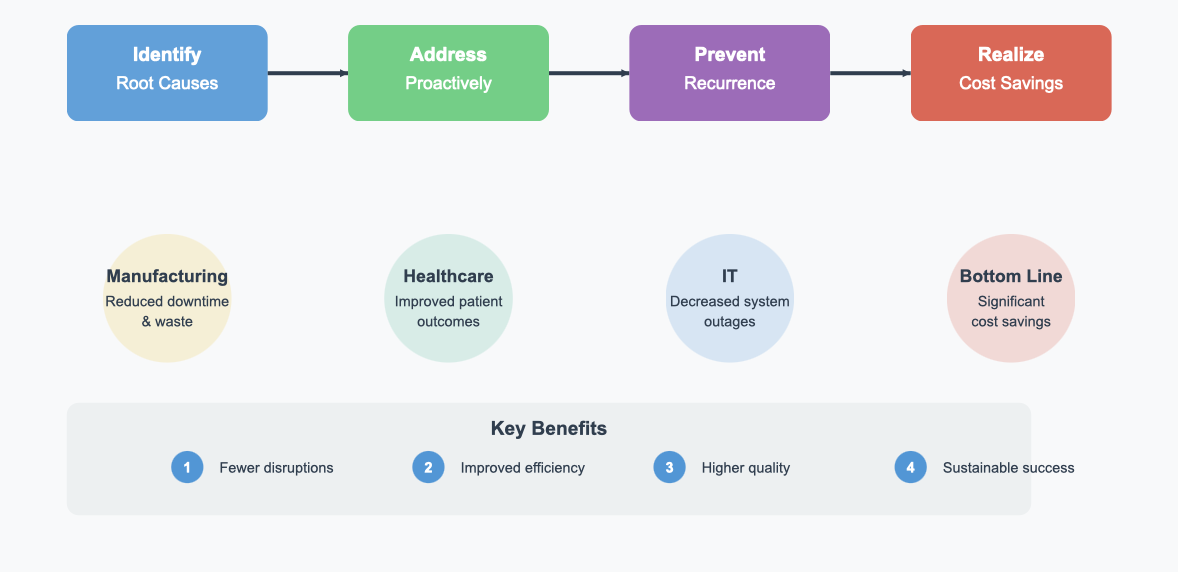
Enhanced decision-making and process improvement
Root cause analysis tools provide valuable insights that enhance your decision-making capabilities. By understanding the root causes of issues, you can make informed decisions that lead to process improvements. This not only boosts efficiency but also helps you maintain high standards in your operations.
Applications Across Industries
Manufacturing and quality control
In manufacturing, root cause analysis tools are essential for maintaining quality control. They help you identify hidden inefficiencies and prevent future disruptions. By focusing on the root causes of issues, you can ensure consistent quality across production lines.
Healthcare and patient safety
In healthcare, these tools are used to improve patient safety and the quality of care. They help identify the root causes of medical errors and other issues, allowing for targeted interventions. This leads to better outcomes for patients and a safer healthcare environment.
IT and software development
In the IT sector, root cause analysis tools enhance testing efficiency and application stability. They help you address high-impact issues promptly, reducing manual effort and increasing accuracy. By automating data collection and analysis, these tools minimize human error and bias, leading to improved accuracy and speed.
Root cause analysis tools have a wide range of applications across various industries. They help managers and operators conduct analyses in a structured manner, ensuring focus on the problem and preventing recurrence. Whether in manufacturing, healthcare, or IT, these tools are invaluable for improving efficiency and maintaining high standards.
Common Root Cause Analysis Tools

1. 5 Whys
Purpose: Simplify the process of identifying root causes
The 5 Whys analysis is a straightforward method to uncover the root cause of a problem. It simplifies complex issues by breaking them down into manageable steps. This technique helps you focus on the underlying issue rather than surface-level symptoms.
How it works: Asking 'why' iteratively to uncover the root issue
To use the 5 Whys, start by defining the problem clearly. Then, ask "why" the problem occurred. Each answer leads to the next "why," creating a chain of reasoning. By the fifth "why," you often reach the root cause. For example, if a machine breaks down, asking "why" repeatedly might reveal that inadequate maintenance schedules caused the failure. This iterative process ensures you address the core issue effectively.
2. Fishbone Diagram (Ishikawa Diagram)
Purpose: Visualize and categorize potential causes of a problem
The fishbone diagram, also known as the Ishikawa fishbone diagram, is a visual tool that organizes potential causes of a problem into categories. It helps you see the bigger picture and identify contributing factors systematically.
How it works: Organizing causes into categories like people, processes, and materials
To create a fishbone diagram, draw a horizontal line representing the problem. Then, add branches for categories such as people, processes, materials, and equipment. Under each category, list specific causes. For instance, in manufacturing, you might use this diagram to analyze defects in a product. By categorizing causes, you can pinpoint areas needing improvement. The fishbone diagram is especially useful for collaborative problem-solving, as it encourages team members to contribute insights.

3. Pareto Chart
Purpose: Prioritize the most significant factors contributing to a problem
The Pareto Chart helps you focus on the vital few causes that contribute to the majority of problems. It is based on the Pareto Principle, which states that 80% of issues often stem from 20% of causes.
How it works: Using the 80/20 rule to focus on the vital few
This tool combines bar and line charts to visualize data. The bars represent individual causes, while the line shows cumulative impact. For example:
| Component | Description |
|---|---|
| Pareto Principle | A small number of causes often lead to the majority of problems (80/20 rule). |
| Visual Representation | Combines bar and line charts to prioritize issues based on their impact. |
| Focus on Vital Few | Helps teams concentrate on the most significant factors contributing to defects or inefficiencies. |
The Pareto Chart requires numerical data to identify and prioritize causes. By focusing on the most impactful issues, you can allocate resources efficiently and achieve faster results. For instance, in quality control, this chart can highlight the top defects responsible for most production delays.
Tip: Use Pareto Charts when you need to prioritize efforts and make data-driven decisions.
These root cause analysis techniques—5 Whys, fishbone diagram, and Pareto Chart—offer structured approaches to problem-solving. They help you uncover root causes, visualize contributing factors, and prioritize actions effectively.
4. Failure Mode and Effects Analysis (FMEA)
Purpose: Systematically evaluate processes to identify potential failures
Failure mode and effects analysis helps you identify potential failures in processes or systems before they occur. It provides a structured way to evaluate risks and prioritize actions. This tool is widely used in industries like manufacturing, healthcare, and aerospace to ensure safety and reliability. By using failure mode and effects analysis, you can prevent costly errors and improve operational efficiency.
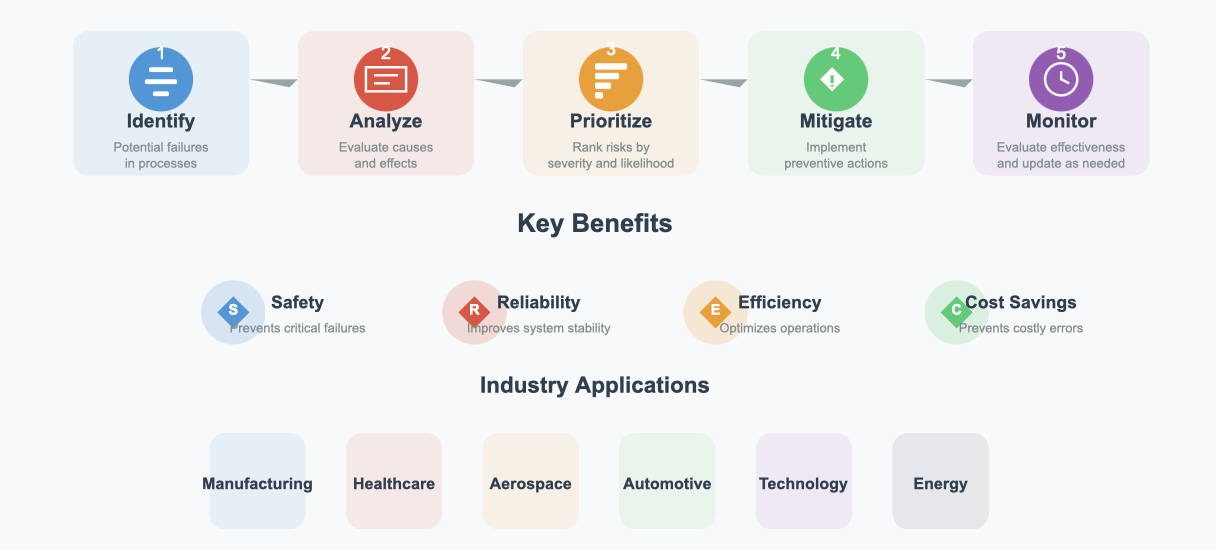
How it works: Assessing the impact and likelihood of different failures
To use failure mode and effects analysis, you start by listing all possible failure modes for a process or product. Then, you assess each failure mode based on three factors: severity, occurrence, and detection. Severity measures the impact of the failure. Occurrence evaluates how likely the failure is to happen. Detection determines how easily you can identify the failure. You assign a score to each factor and calculate a risk priority number (RPN). Higher RPN values indicate higher risks, which require immediate attention.
For example, in manufacturing, you might use failure mode and effects analysis to evaluate a production line. If a machine has a high likelihood of breakdown and the failure severely impacts production, you would prioritize maintenance for that machine. This proactive approach minimizes downtime and ensures smooth operations.
5. AI-Powered Root Cause Analysis Tools
Purpose: Enhance root cause analysis with artificial intelligence
AI-powered root cause analysis tools take problem-solving to the next level. They use artificial intelligence to analyze large datasets and identify patterns that humans might miss. These tools excel in automated anomaly detection, helping you address issues before they escalate. By leveraging AI, you can improve accuracy, reduce response times, and enhance decision-making.
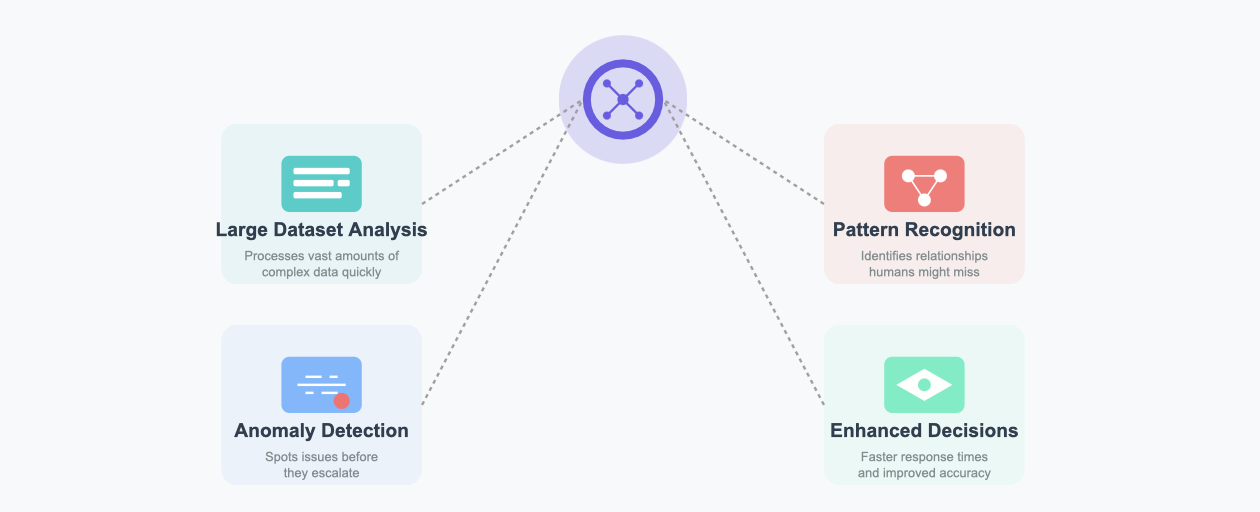
How it works: Leveraging AI for data-driven insights and automation
AI-powered root cause analysis tools rely on algorithms to process data and detect anomalies. They use machine learning to adapt to new data and evolving environments. For instance, these tools can monitor IT systems, identify anomalies in real-time, and suggest corrective actions. Automated anomaly detection reduces manual effort and ensures faster diagnostics.
Here’s a table summarizing the performance metrics of AI-powered root cause analysis tools:
| Performance Metric | Description |
|---|---|
| Incident Response Time | AI-powered RCA tools significantly reduce the time taken to identify and resolve incidents. |
| Downtime Reduction | These tools help in minimizing system downtime through proactive measures and faster diagnostics. |
| Scalability | AI-powered RCA can handle complex IT environments and large volumes of data effectively. |
| Continuous Learning | The tools adapt to new data and evolving environments, improving their predictive capabilities. |
| Pattern Recognition | AI algorithms detect patterns and correlations that may not be apparent to human operators. |
For example, in IT, these tools can analyze server logs to detect anomalies like unusual traffic spikes. By addressing these anomalies early, you can prevent system failures and maintain stability. AI-powered tools also support continuous learning, making them more effective over time.
Tip: Use AI-powered tools to automate anomaly detection and gain deeper insights into your data. This approach saves time and ensures proactive problem-solving.
How to Use Root Cause Analysis Tools Effectively
General Steps to Identify Root Cause
To effectively identify and solve problems, you need a structured approach. Follow these steps to ensure success:
- Define the problem clearly
Start by articulating the issue in detail. Include observable characteristics, impacts, and symptoms. For example, if a machine frequently malfunctions, describe when and how it happens. A clear definition sets the foundation for accurate analysis. - Gather data and evidence
Collect all relevant information about the problem. This includes incident reports, logs, and interviews with stakeholders. Establish a timeline to understand the sequence of events. Comprehensive data ensures you detect issues accurately. - Identify potential causes
Use problem-solving methods like brainstorming or analytical tools to list all possible causes. For instance, a fishbone diagram can help categorize factors such as equipment, processes, or human error. - Analyze and validate the root cause
Evaluate each potential cause using data. Determine the root cause by identifying the factor most directly linked to the problem. Validation ensures your findings are reliable. - Implement corrective actions and monitor results
Develop a clear action plan to address the root cause. Assign responsibilities and set deadlines. After implementing the solution, monitor its effectiveness to ensure the problem does not recur.
Tip: Thorough documentation of each step helps in knowledge sharing and prevents future issues.
Tips for Effective Use
To maximize the benefits of root cause analysis tools, consider these best practices:
- Involve the right team members
Collaboration is key. Include individuals with diverse expertise to gain multiple perspectives on the problem. For example, in manufacturing, involve operators, engineers, and quality control staff. - Use the appropriate tool for the problem
Choose tools based on the nature of the issue. For instance, use Failure Mode and Effects Analysis (FMEA) for complex systems or the 5 Whys for simpler problems. This ensures efficiency and accuracy. - Ensure thorough documentation of findings
Record every detail of the analysis process, including data, identified causes, and corrective actions. This documentation serves as a reference for future problem-solving efforts.
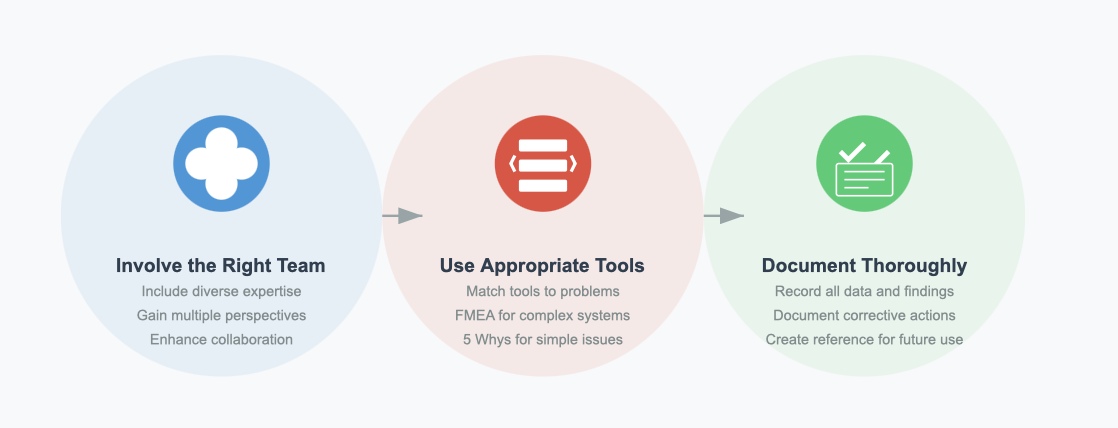
Note: Combining qualitative and quantitative tools, like FMEA and Pareto Analysis, enhances the reliability of your findings.
Example Applications
Case study: Using the 5 Whys to resolve a manufacturing defect
A factory faced frequent defects in a product. By conducting root cause analysis with the 5 Whys, they identified inadequate maintenance schedules as the root cause. Implementing a stricter maintenance routine reduced defects significantly.
Case study: Applying the Fishbone Diagram in healthcare
A hospital experienced medication errors. Using a fishbone diagram, they categorized causes into processes, training, and equipment. The analysis revealed a lack of standardized procedures. By introducing a protocol, they improved patient safety and reduced errors.
Insight: These examples show how root cause analysis tools can address diverse issues across industries.
Applications of Root Cause Analysis Tools in Manufacturing

Enhancing Quality Control with FineReport
Real-time monitoring of defect rates and scrap rates
FineReport empowers you to monitor defect rates and scrap rates in real time, ensuring that quality issues are identified and addressed promptly. By integrating data from multiple sources, FineReport creates dashboards that display key metrics such as product qualification rates and defect trends. This allows you to track performance across production lines and detect anomalies as they occur. For example, if a spike in defect rates is observed, you can immediately investigate and implement corrective actions . Real-time monitoring not only improves operational efficiency but also ensures consistent product quality.
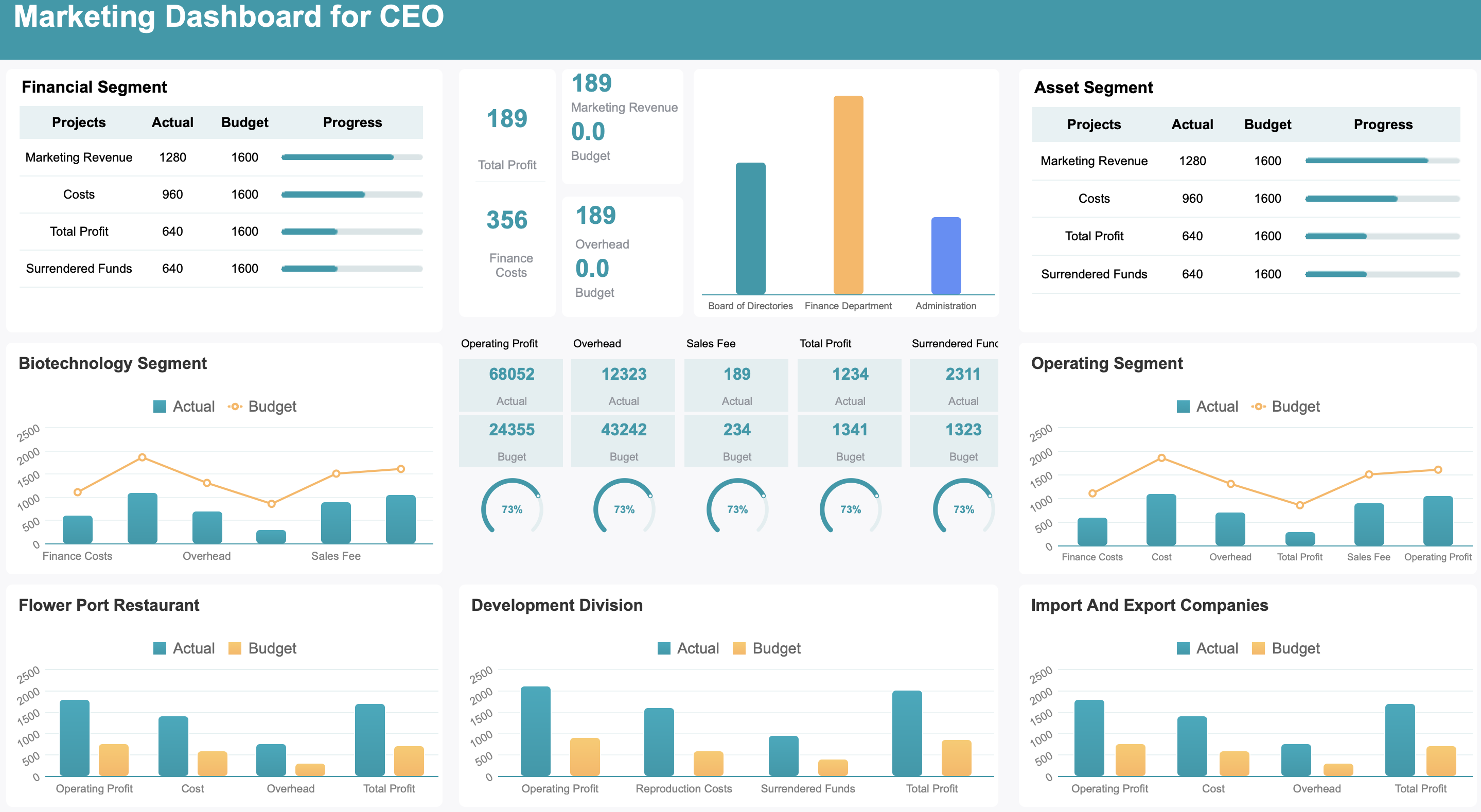
Visualizing root causes with dashboards and charts
FineReport’s advanced visualization capabilities make it easier for you to identify the root causes of quality issues. Using tools like bar charts, line graphs, and pie charts, you can categorize and analyze data effectively. For instance, a pie chart might reveal that a significant percentage of defects stem from a specific production stage. Dashboards provide a comprehensive view of these insights, enabling you to focus on areas that require immediate attention. This visual approach simplifies complex data, making it accessible even to non-technical team members.
Streamlining Production Efficiency with FineBI
Identifying bottlenecks in production processes
FineBI helps you uncover bottlenecks that hinder production efficiency. Its dashboards aggregate data from various sources, allowing you to spot trends, delayed KPIs, and operational inefficiencies. For example:
- Dashboards highlight both positive and negative trends in production.
- They pinpoint delayed KPIs, enabling quick corrective actions.
- Aggregated data becomes accessible to non-technical users, fostering collaboration.

By identifying these bottlenecks, you can take proactive measures to optimize workflows and enhance productivity.
Leveraging OLAP analysis for root cause identification
FineBI’s OLAP (Online Analytical Processing) analysis enables you to drill down into data and identify root causes of inefficiencies. This feature allows you to explore data dynamically, filtering and linking information to uncover hidden patterns. For instance, you can analyze production delays by examining factors like equipment performance or workforce allocation. OLAP analysis provides a structured approach to root cause identification, ensuring that you address the most critical issues effectively.
Leveraging AI-Powered Root Cause Analysis with FineChatBI
Using Text2DSL technology for accurate query interpretation
FineChatBI revolutionizes root cause analysis by using Text2DSL technology. This feature translates natural language queries into structured data queries, ensuring accurate interpretation of your questions. For example, you can ask, “Why did production slow down last week?” and receive precise insights based on real-time data. This technology eliminates ambiguity, making it easier for you to trust the results and take informed actions.
Enhancing decision-making with prescriptive analysis
FineChatBI goes beyond identifying root causes by offering prescriptive analysis. It uses AI to predict potential issues and recommend solutions. Compared to traditional methods, AI-powered tools provide faster and more accurate insights. Here’s a comparison:
| Benefit | Traditional RCA | AI-Powered RCA |
|---|---|---|
| Approach | Reactive | Proactive |
| Downtime Prediction | Not possible | Predicts potential issues before they occur |
| Speed of Analysis | Time-consuming due to human intervention | Analyzes vast amounts of data quickly |
| Accuracy | Prone to human error | More accurate insights and recommendations |
| Real-time Insights | Limited | Provides real-time root cause analysis |
AI-powered tools like FineChatBI reduce downtime by predicting issues early. They also process large datasets, minimizing human error and enhancing reliability. This proactive approach ensures improved application stability and better decision-making.
Tip: Use FineChatBI to shift from reactive problem-solving to proactive issue prevention, saving time and resources.
Best Practices for Implementing Root Cause Analysis Tools
Building a Problem-Solving Culture
Encourage proactive identification of issues
Creating a culture that encourages proactive identification of issues is essential for long-term success. You can achieve this by focusing on three key aspects:
- Prevent Recurrence: Implement measures to ensure the original problem and similar issues do not occur again. For example, use root cause analysis tools to identify and address recurring defects in manufacturing processes.
- Systemic Improvement: Use insights from problem-solving to enhance systems, processes, and practices. This approach improves overall quality and performance. For instance, refining your testing protocols based on past failures can lead to more reliable outcomes.
- Enhance Organizational Learning: Share insights and best practices derived from problem-solving efforts. This promotes continuous improvement and helps your team tackle future challenges more effectively.
By fostering this culture, you empower your team to address issues proactively, reducing the likelihood of disruptions and inefficiencies.
Provide training on root cause analysis tools
Training your team on root cause analysis tools ensures they can use these resources effectively. Start by introducing the basics of tools like the 5 Whys, Fishbone Diagram, and Failure Mode and Effects Analysis (FMEA). Then, provide hands-on sessions where team members can practice applying these tools to real-world scenarios. For example, simulate a testing environment where participants identify the root cause of a hypothetical application failure. Regular training sessions keep your team updated on the latest techniques, ensuring they remain adept at solving complex issues.
Integrating Tools with FanRuan Solutions
Align tools with organizational goals
To maximize the impact of root cause analysis tools, align them with your organizational goals. Begin by identifying key performance indicators (KPIs) that reflect your objectives. For instance, if your goal is to reduce production downtime, use tools like FineReport to monitor real-time data and identify bottlenecks. Aligning tools with goals ensures that your efforts directly contribute to achieving measurable outcomes.
You can try it out in the demo model below:
Use FineReport and FineBI for data visualization and analysis
FanRuan solutions like FineReport and FineBI enhance your ability to visualize and analyze data effectively. FineReport allows you to create dashboards that display critical metrics, such as defect rates and testing results, in real time. These visualizations make it easier to identify patterns and root causes. FineBI, on the other hand, empowers you to perform advanced OLAP analysis, enabling you to drill down into data and uncover hidden inefficiencies. For example, you can analyze testing delays by examining factors like resource allocation or equipment performance. By integrating these tools, you streamline your root cause analysis process and improve decision-making.
Leveraging AI for Continuous Improvement
Automate repetitive tasks with AI-powered tools
AI-powered tools simplify your workflow by automating repetitive tasks. For instance, AI algorithms can aggregate data from multiple sources, saving you time and allowing your team to focus on strategic activities. In manufacturing, AI systems can analyze testing data to identify wear-and-tear patterns, enabling proactive maintenance. This automation not only improves efficiency but also enhances the accuracy of your analysis.
Use predictive analytics to prevent future issues
Predictive analytics helps you forecast potential failures before they occur. By analyzing historical and real-time data, AI systems can identify trends and anomalies that human analysts might miss. For example, in application testing, predictive analytics can highlight areas prone to errors, allowing you to address them proactively. This approach shifts your focus from reactive problem-solving to proactive issue prevention. Additionally, predictive maintenance strategies reduce downtime and maintenance costs, ensuring smoother operations.
Tip: Leverage AI-powered tools to transition from reactive to proactive root cause analysis. This shift enhances system reliability and reduces operational risks.
Root cause analysis tools are vital for identifying and resolving problems effectively. They enhance operational efficiency, improve product quality, and streamline processes. By addressing issues at their core, these tools prevent recurrence and boost customer satisfaction. Companies using AI-powered solutions have reported significant cost savings and optimized resource use. FanRuan's solutions, such as FineReport, FineBI, and FineChatBI, empower you to visualize data, identify root causes, and implement corrective actions seamlessly. Adopting these tools strengthens your problem-solving capabilities, ensuring long-term success and improved decision-making across applications.
Click the banner below to try FineBI for free and empower your enterprise to transform data into productivity!
Continue Reading About Data Analysis
How to Fix Data Analysis Excel Not Showing in 2025
What is SaaS Analytics and Why Businesses Need It
Top Beginner-Friendly Data Analysis Projects to Build Your Portfolio
Data Analysis vs Data Analytics: What’s the Real Difference?
What’s Topological Data Analysis? Simplify Data Secrets!
What is Retail Industry Data Analysis and Why It Matters
FAQs on Root Cause Analysis Tools
What is the main purpose of root cause analysis tools?
Root cause analysis tools help you identify the underlying reasons for problems. They aim to eliminate recurring issues, improve processes, and enhance decision-making. By addressing the root cause, you prevent future disruptions and maintain operational efficiency.
How do I choose the right root cause analysis tools?
Select a tool based on the complexity of your problem. Use simple tools like the 5 Whys for straightforward issues. For complex systems, opt for advanced methods like Failure Mode and Effects Analysis (FMEA) or AI-powered tools for data-driven insights.
Can root cause analysis tools be used in any industry?
Yes, these tools apply across industries. Manufacturing, healthcare, IT, and more benefit from their structured approach. They help improve quality, reduce costs, and enhance safety by addressing the root causes of issues specific to each sector.
How does AI improve root cause analysis?
AI-powered tools analyze large datasets, detect patterns, and identify anomalies. They provide faster, more accurate insights compared to manual methods. AI also predicts potential issues, enabling proactive measures to prevent problems before they occur.
What are some examples of root cause analysis tools?
Common tools include:
- 5 Whys: Simplifies problem-solving by asking "why" repeatedly.
- Fishbone Diagram: Visualizes potential causes.
- Pareto Chart: Prioritizes significant factors.
- FMEA: Evaluates risks systematically.
- AI-powered tools: Automate analysis and provide predictive insights.
How can I ensure effective use of these root cause analysis tools?
Define the problem clearly, gather relevant data, and involve the right team members. Choose the appropriate tool for the issue and document findings thoroughly. Regular training ensures your team stays proficient in using these tools effectively.
Are FanRuan solutions suitable for root cause analysis?
Yes, FanRuan solutions like FineReport, FineBI, and FineChatBI enhance root cause analysis. They offer real-time monitoring, advanced visualization, and AI-powered insights. These tools streamline your analysis process and improve decision-making.
What are the benefits of using AI-powered tools like FineChatBI?
AI-powered tools like FineChatBI reduce downtime, improve accuracy, and provide real-time insights. They automate repetitive tasks and predict potential issues. This proactive approach saves time, enhances reliability, and ensures better decision-making.

The Author
Lewis
Senior Data Analyst at FanRuan
Related Articles

Understanding the Work of a Data Quality Analyst
A data quality analyst ensures data accuracy, consistency, and reliability by identifying, resolving, and monitoring data quality issues for business success.
Lewis
Nov 17, 2025

How Can Employee Retention Software Help Lower Turnover Rate
Employee retention software lowers turnover by tracking engagement, identifying risks, and supporting recognition to keep employees satisfied and loyal.
Lewis
Nov 16, 2025

What is Retention and Why It Matters Across Different Fields
What is retention? It means keeping customers, employees, or knowledge over time—a key metric for loyalty, value, and success in any field.
Lewis
Nov 16, 2025




